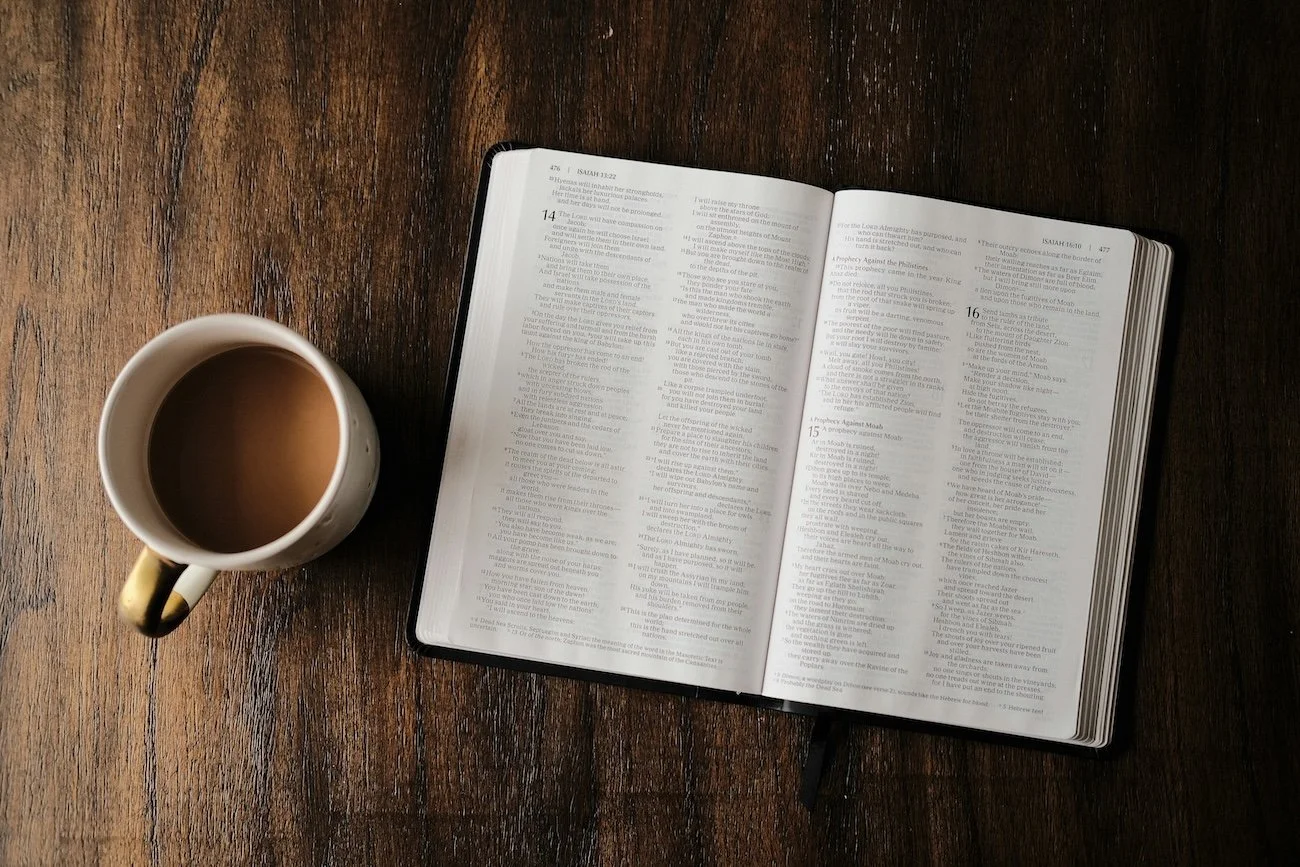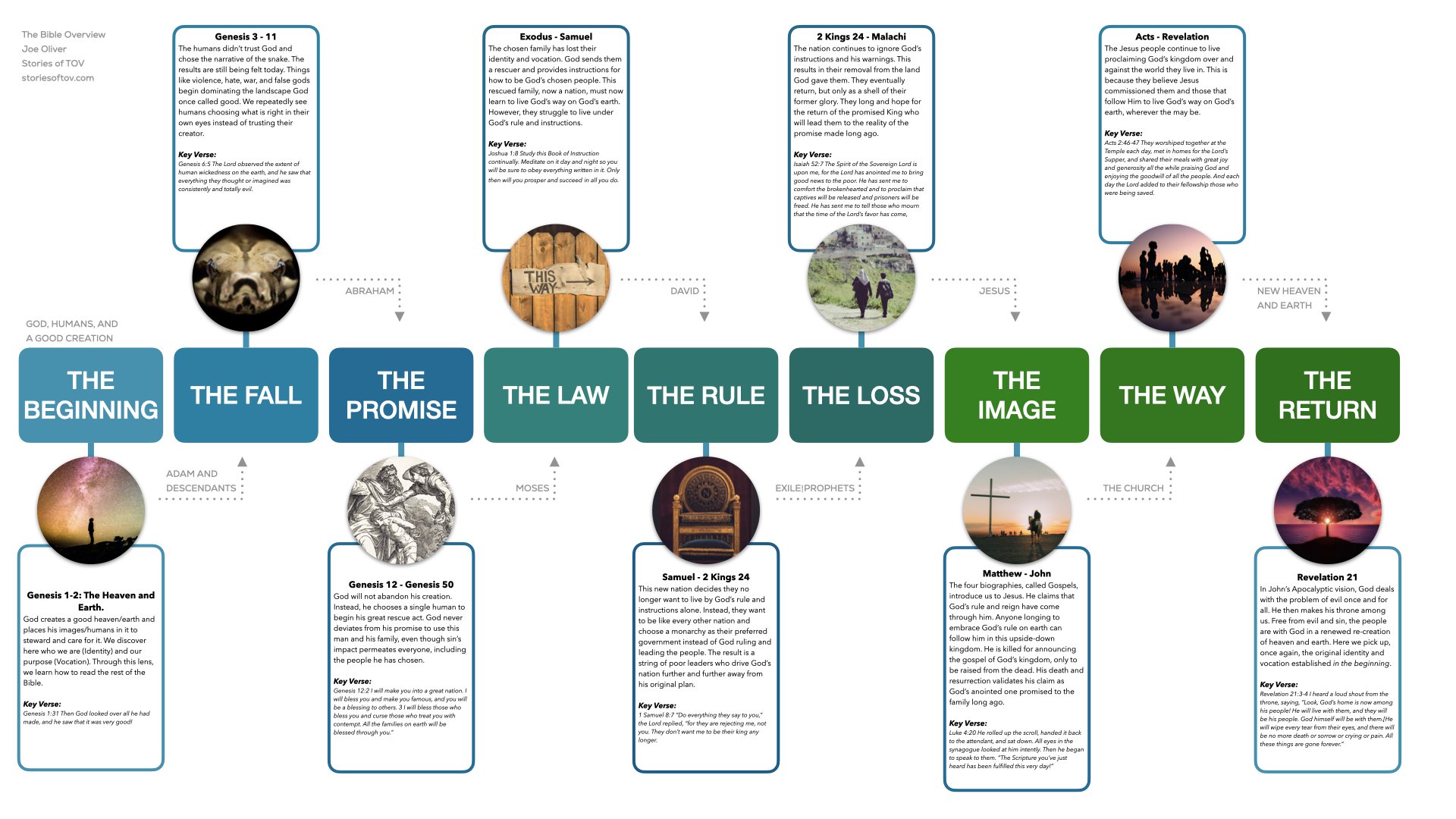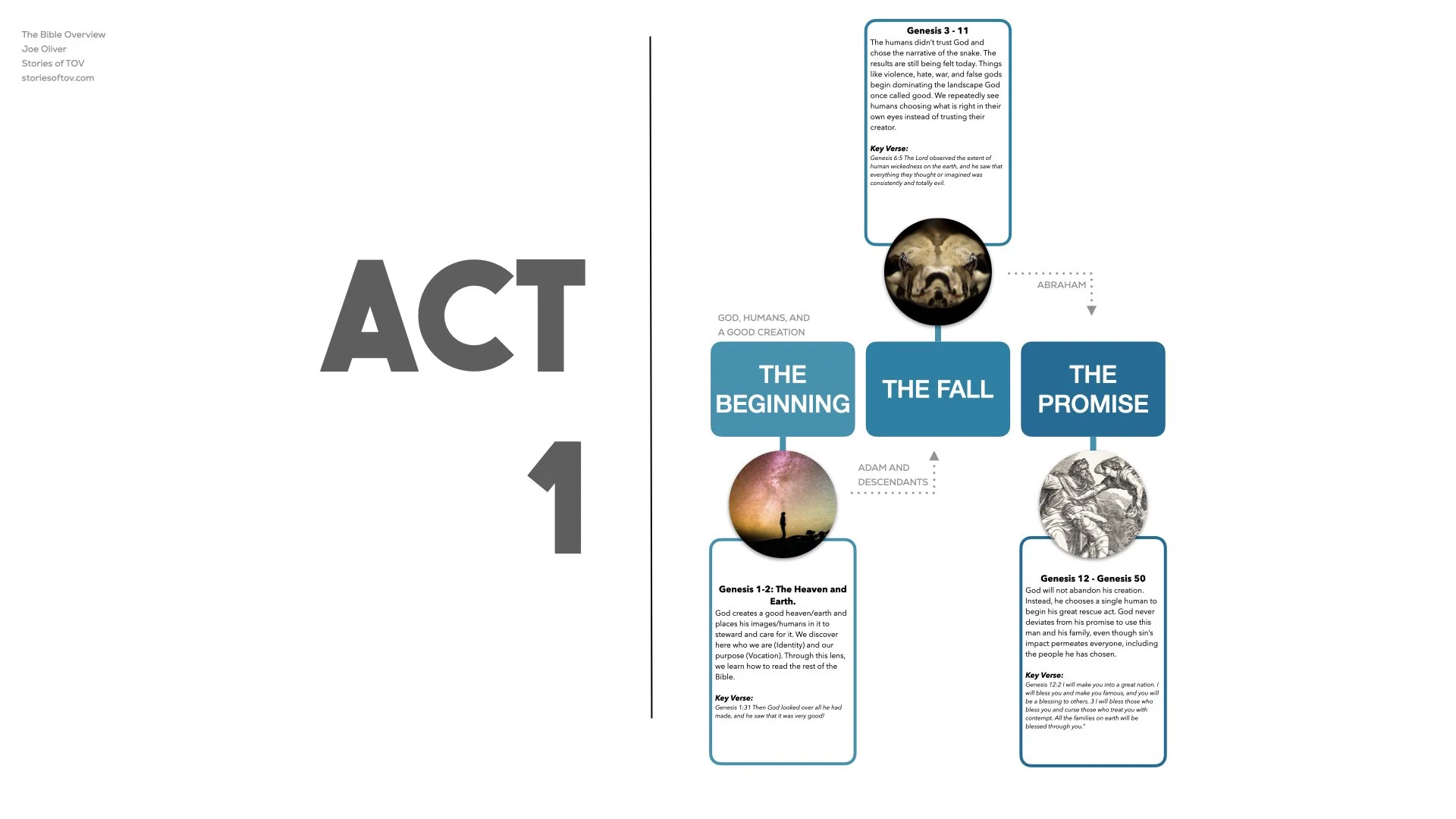The Bible’s Big Story: How Genesis Sets Up Everything That Follows
Let me be straight with you—reading the Bible as a whole can feel overwhelming. Like, really overwhelming. Most people I know who’ve tried to do it either gave up early or ended up more confused than when they started. And honestly, I get it. I’ve been there too. Years ago, I was asked to preach a sermon about the Bible—just, like, the whole thing. And while preparing for that, I realized we often miss the big picture because we don’t have a framework. We don’t know where we are in the story.
So I made one. Just something simple—a visual, a way to help people get their bearings. Because when you don’t know what part of the story you’re in, you don’t know how to make sense of what you’re reading. And that’s true for the Bible too. This graphic I created—it’s not some academic deep dive or historical analysis. It’s a theological take. A 30,000-foot view of how I’ve come to understand the Bible from Genesis to Revelation. It’s helped me, and maybe it’ll help you too.
Here’s the way I’ve broken it down: the Bible tells one big story that plays out in three acts. Just like a play or a movie. You’ve got the setup, the conflict, and the resolution. And today, I’m focusing just on Act One. The Setup. Act One includes three movements: The Beginning, The Fall, and The Promise.
So The Beginning is Genesis 1 and 2. That’s it—just two chapters. But in those two chapters, you get God’s original intent for the world. You see humans made in God’s image, put in a good world, given purpose and identity. It’s beautiful. It’s whole. It’s what it was supposed to be. And it matters. I mean, I’ve got Genesis 1:31 tattooed on my arm in Hebrew—“God saw all that He had made, and it was very good.” That word “good” is tov, and it’s the heartbeat of the ministry Jane and I started. Because God didn’t just create something functional—He created something good. Very good. And that sets the tone for everything that comes after.
But it goes wrong, fast. The Fall is Genesis 3 through 11. It’s humans choosing their own way, listening to the wrong voice, rejecting their identity and calling. And it spirals. Violence, oppression, brokenness, people doing what’s right in their own eyes—it gets worse and worse. And it’s not just “Bible stuff.” It’s what we see in the world around us. Still. Genesis 6:5 hits hard: “The Lord observed the extent of human wickedness… everything they thought or imagined was constantly and totally evil.” That’s what happens when we reject the tov of Genesis 1 and 2. The Fall is the result.
But then comes The Promise. That’s Genesis 12. And it’s wild because instead of giving up on humanity, God chooses to re-enter the story. He doesn’t scrap it—He gets involved. He picks one man, Abraham, and says, “Through you, I’m going to bless all the families of the earth.” That’s the pivot. That’s the promise. And it shows us something huge—God’s not walking away. He’s not discarding what He made. He’s doubling down on it. He wants to work with us, through us, to restore what was broken. That’s the setup.
And here’s the thing—if you don’t understand Act One, the rest of the Bible won’t make much sense. You’ll read Leviticus or the prophets or Paul and just think, “What is going on here?” But when you have Act One in your mind—when you understand what God was doing, what went wrong, and what He set out to do about it—it changes how you see everything else.
I remember starting to read the Bible at age 15. Never read it before. Like most people, I started at Genesis—because that’s what you do with books, right? You start at the beginning. And honestly, I think that’s a pretty good instinct. Because Genesis lays the foundation. Genesis 1 and 2 give us the ideal, what life with God was meant to be. And Genesis 3 through 11 show us how badly it went when we chose our own way. But then Genesis 12 tells us that God didn’t give up. He made a promise. He entered the story again to restore the good.
That matters. And it leads me to a question I’ve been wrestling with for years. If God created the world and said it was very good, and if He’s spent so much time entering the story to redeem it, why would the end of the story just be Him destroying it all and zapping us off to heaven? Like, really think about that. Does that make sense?
If the world is just going to be discarded in the end, why did He call it very good in the beginning? Why not give up after the Fall? Why re-engage through Abraham if the endgame is evacuation?
I don’t think the Bible tells a story of abandonment. I think it tells a story of renewal. Restoration. Scholars like N.T. Wright and Michael Bird have helped me see that more clearly. And it’s shifted how I live and read and hope.
Act One matters. Because it’s the foundation for everything else. It’s where we see what God wants, how we walked away from it, and how God refuses to be done with us.
And that includes you. God still wants to bring good to the world, and He still chooses to do it through people. Through families. Through flawed humans who say yes.
So here’s the invitation: know the setup. Read Genesis 1 and 2 over and over again. Sit in the goodness of what God intended. Understand the spiral of Genesis 3–11. And don’t miss the power of the promise in Genesis 12.
This is just Act One. In the next posts, I’ll walk through Act Two and Act Three. But for now, just sit with this part of the story. And maybe start asking: What if this is still the story we’re in?


